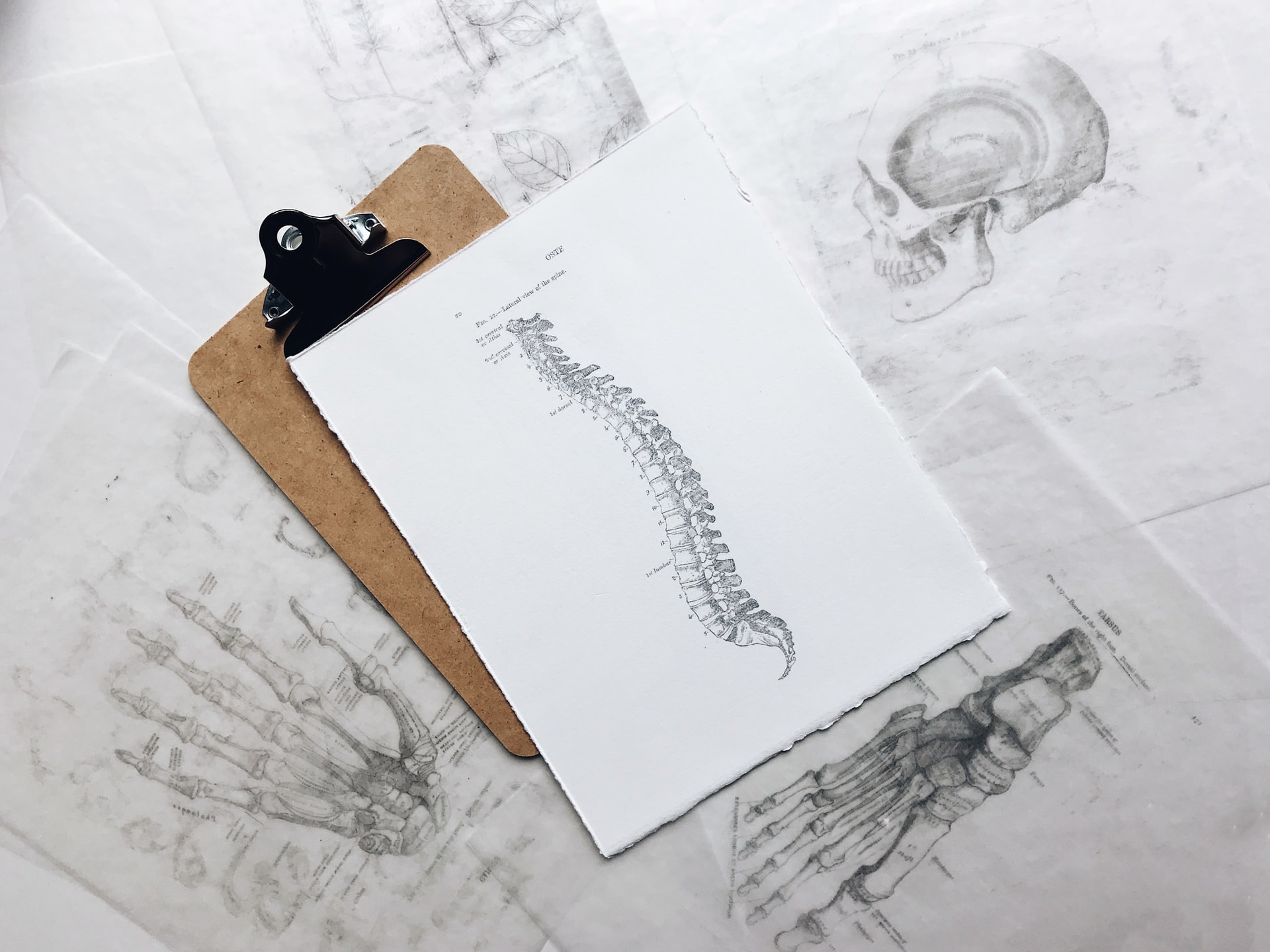You’ve probably noticed that people with good posture appear taller, thinner and even more confident. And maybe you’ve realized that improving your posture would minimize that nagging back pain.
So much that we do in our daily lives, from sitting at a computer to driving to looking at our phones, has us looking and leaning forward, which takes our head and neck out of proper alignment.
This results in symptoms such as neck, shoulder and lower back pains (or Lumbago) as well as increased tension headaches.
Did you know that this poor alignment can also lessen your overall body balance and put stress on your spine? Even your digestion and breathing can be impaired from poor posture.
The time to start improving your posture is now!
Body Awareness
Proper posture has you aligning your weight-bearing joints in order to distribute the force of gravity, avoiding any one structure from being overstressed and maintaining correct body mechanics. But what does that look and feel like?
When standing:
- You want your chin parallel with the floor.
- Your ears should be resting over your shoulders, not forward.
- You want your shoulders relaxed and even – not curved forward or pressed back too far.
- Try to keep your spine in its neutral position.
- Engage your abdominal muscles.
- Keep your hips and knees even.
- Distribute your body weight evenly on both feet.
When sitting:
- Keep your chin parallel to the floor.
- Your shoulders, hips and knees should stay at even heights.
- Keep your knees and feet pointing straight ahead.
The trick, of course, is to catch yourself when you are exhibiting poor posture and to make adjustments. Take a minute to visualize the points in your typical day where your posture is likely compromised.
Marathon work sessions at a computer can wreak havoc on posture. Consider setting a timer as a regular reminder to check your whole body alignment.
If you know you’ll be standing for long periods, set your phone timer to vibrate as a signal every 15 minutes or so. This can be a helpful reminder to realign.
Another idea might be to make a posture check as part of a regular daily rhythm. For example, every time you get off the phone or right before writing an email, take inventory of your body alignment, and make the necessary adjustments.
Your jaw posture, while not as commonly thought about, is also critically important. Mewing, a series of tongue placement exercises, can have real impact on things such as breathing problems, sleep apnea and sinus inflammation. Study mewing and how you can benefit.
Adjustments for Better Posture When Standing
Here are some posture adjustments to make if you find yourself in a situation with a lot of standing:
- Stand up straight. Imagine a string coming from your head, attached to your spine. Extend the string by stretching the top of your head toward the ceiling.
- Keep your feet about shoulder-width apart.
- Move as much as you can. Even if you’re stuck in one general area, you can move a few feet back and forth. This is better than just having gravity do its work on you in one place.
- Try placing more weight on the balls of your feet.
- Wear comfortable, low-heeled shoes. High heels are not your friend as they tend to cause you to lean forward and take your body out of alignment. This will cause you more fatigue and lead to poor posture.
Adjustments for Better Posture When Sitting
Here are some additional tips if you find yourself sitting for long periods:
- Get up regularly and walk briefly around your office, home or workspace.
- Avoid sitting with your legs crossed. This creates an imbalance and causes your joints to wear unevenly.
- Place your feet flat on the floor or use a foot rest if needed.
- Make sure your back is fully supported. Sit all the way back in a straight-backed chair, and use a lumbar roll or folded towel in the arch of your lower back.
Create an Ergonomically Friendly Workstation
There are plenty of changes you can make to your work set-up that will lead to better posture without you having to think about it.
- Make sure the desk or counter is at a correct height to avoid leaning forward.
- Keep your screen at eye-level to avoid leaning forward and down.
- Make sure you have a well-padded seat that keeps your hips and thighs supported and parallel with the floor.
- Keep your elbows close to your body, creating a 90-degree angle and keeping the forearms and wrists parallel to the floor. If you can push the keyboard back far enough to allow for your forearms to rest on the desk or table, that would also help reduce fatigue.
- Place your keyboard directly in front of you rather than at a side angle. Avoid sitting in a twisted position that takes your spine out of neutral alignment and increases muscle fatigue, which could lead to slouching.
- If you are on the phone regularly, consider using a headset or earbuds instead of holding the phone between your ear and neck. This will help avoid neck muscle strain.
- If possible, try a sit-to-stand desk.
Working from Home? Consider a Lap Desk
Workplace posture is of greater concern now than perhaps ever as so many people are working remotely through the COVID-19 pandemic.
Maintaining good posture while working on your laptop from your bed, couch or dining room table can become nearly impossible after any significant duration.
A lap desk that can be adjusted for height and surface angle and that has some wrist support can do wonders for your work-from-home health.
With a variety of lap desk options in the $15 to $90 price range, you can find a lot of useful features, including:
- Surface material (generally wood or plastic)
- Cup holders (some of them stow away to save space)
- Stoppers or texture to prevent your laptop from sliding
- Storage options
- Cooling fans
- A retractable mouse tray
- A slot for your phone
- A foldable book stand
- Lap cushions
- An attachable light
Read more about lap desks here.
Exercises to Improve Posture
- Exercises that focus on correct head and neck position:
- Head retraction exercise
- Neck stretch
- Exercises that strengthen your upper back and shoulders:
- Child pose
- Shoulder rolls
- Lower neck/upper back stretch
- Wall push ups
- Resisted shoulder blade squeeze
- Seated rows
- Core strengthening exercises:
- Bridge
- Plank
- Posture and balance go hand in hand. Better balanced muscles make for stronger posture muscles. The Mayo Clinic suggests the following basic balance exercises:
- Weight shifts
- Single-leg balance
- Bicep curls for balance
- Tai Chi exercises: Look for classes or groups practicing in your area.
Make a Plan to Improve Your Posture
Your mom was right to tell you to stand up straight, to not slouch and to keep your head up. She just wanted you to look presentable, but good posture has plenty of other benefits.
Having a plan for improving your posture can help you not only avoid minor aches and pains but also reduce wear-and-tear on your joints. Ultimately, improving your posture can save you from chronic pain and can help you enjoy increased range of motion.
With a simple vision of what good posture looks like, body awareness and some exercises to help you reinforce proper positions, you are armed with the knowledge to create your posture improvement plan.
Don’t be surprised when you too start to feel thinner and taller. And your improved posture will help give you the confidence to take on the world.
Additional resources regarding the importance of improved posture:
- https://www.healthline.com/health/fitness-exercise/posture-benefits
- Southern California Orthopedic Institute
- https://www.health.harvard.edu/staying-healthy/why-good-posture-matters
- https://www.h-wave.com/blog/why-good-posture-matters-and-bad-posture-can-hurt-your-health/



